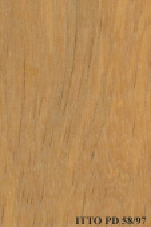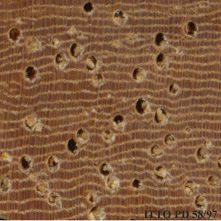
SOUGUé (Parinari excelsa)
Nom commercial
Sougué
Nom scientifique (avec auteur)
Parinari excelsa Sabine
Famille
CHRYSOBALANACEAE
Noms communs (pays)
Eshago (Nigeria); Mampataz (Guinea-Bissau); Koura (Guinea); Sougué (Côte d`Ivoire); Pembe (Zaire); Assila (Cameroon); Mula (Tanzania); Suge; Sougue; Shuge; Rough skinned plum; Pembe; Omushamba; Nnamulambo; Namulambo; Mushimba; Munazi; Mula; Muganda; Msabala; Mbura; Mbula; Mampataz; Kwanedua; Kuranako; Kura; Kotue; Kotosima; Gulih; Guinea plum; Grey skinned plum; Grey plum; Gboh; Ebura; Ebula; Djirro; Bula; Mampata (Senegal); Inyi (Nigeria); Esagko (Nigeria); Kpar (Liberia); Mubura (Uganda)
Synonymes du nom scientifique (avec auteurs)
Parinari tenuifolia A. Chev. ex Dandy; Parinari holstii Engl.; Parinari elliotii Engl.; Parinari curatellifolia Planch. ex Benth.; Parinari caillei A. Chev.; Parinari brachystachya Benth.; Ferolia excelsa (Sabine) Kuntze; Ferolia amazonica Kuntze
DESCRIPTION DE L'ARBRE
Description botanique
The tree reaches a height of 30 to 50 m. The bole is cylindrical, buttressed to a height of 3 m, mostly straight, and clear to 20 to 30 m in length. The trunk diameter attains 100 to 170 cm.
Habitat naturel
Parinari excelsa is found in evergreen forests, near river banks. It is also found in lighter rainfall areas, on well drained sites and in montane forests near Mt. Kilimanjaro. This species occurs gregariously at elevations between 1,000 and 2,000 m.
Répartition naturelle
Widely distributed in tropical Africa.
IDENTIFICATION DU BOIS
Description anatomique du bois
Wood diffuse porous. Vessels exclusively solitary (over 90%). Vessels of two distinct diameter classes, wood not ring-porous. Tangential diameter of vessel lumina 100 to 150 micras (small). Tangential diameter of vessel lumina 200 micras or more (large). Tylos Axial parenchyma in continuous tangential lines or fine bands. Non-crystals in axial parenchyma cells. 3 to 4 cells per parenchyma strand. Over 9 cells per parenchyma strand. Axial parenchyma bands under 4 per mm. Rays more than 10 per mm (abundant). Rays non-storied. Rays exclusively uniseriate. Silica bodies in the ray cells. Heterogeneous rays and/or multiseriate heterogeneous rays. Non-septate fibers. Fibers with distinctly bordered pits.
-
 Vue macroscopique du bois (plan tangentiel)
Vue macroscopique du bois (plan tangentiel)
-
 Vue microscopique d'une section transversale du bois
Vue microscopique d'une section transversale du bois
Disponibilité
Statut CITES
Unrestricted
DESCRIPTION GÉNÉRALE DU BOIS
Odeur
Light and pleasant odor.
Teinte
The sapwood is pale yellow. The heartwood is pale red or chocolate brown, it is not clearly demarcated.
Index de Teinte (1 = Noir, 7 = Jaune clair)
5
Grain
The grain is highly and systematically interlocked; special care is needed when drying because of frequent risks of distortion.
Texture
The wood is reported to have a coarse texture.
Luster
It is reported to be low in luster.
Durabilité naturelle
Moderately durable to decay. Without preservative treatment, this species can be used only under risk of occasional re-humidification. It is not suited for uses with risks of permanent or long-lasting humidification. Moderately resistant to termites attack
Index de durabilité naturelle (1 = Très élevée, 7 = Très faible)
3
Tensions internes de croissance
No residual stresses are reported in this species.
Teneur en silice
Silica Content: This timber is reported to have silica. Silica contents over 0.05% may affect wood processing. Silica Value: 0.59
Résistance à l'imprégnation
Difficult to treat with only a low penetration of the preservative products.
PROPRIÉTÉS PHYSIQUES DU BOIS
Densité basale ou gravité spécifique (poids anhydre/vol. saturé) (g/cm³)
0.78
Densité sèche à l'air (poids et volume à 12%TH) (g/cm³)
0.89
Retrait tangentiel total (saturé à 0%TH) (%)
10.1
Retrait radial total (saturé à 0%TH) (%)
6.6
Défauts dus au séchage
Ease of Drying: Drying is moderately difficult to difficult; special care is systematically needed. Drying Defects: Risks of checks, distortions and collapse. Kiln Schedules: The kiln schedule has been tested.
Calendrier de séchage en séchoir recommandé
FR-12
Ratio de stabilité dimensionnelle (% retrait tangentiel total/% retrait radial total)
1.5
Calendrier de séchage en séchoir
http://www.tropicaltimber.info/wp-content/uploads/2015/09/KD_French.pdf
PROPRIÉTÉS CHIMIQUES DU BOIS
PROPRIÉTÉS MÉCANIQUES DU BOIS
Résistance à la flexion (module de rupture_MOR) 12%TH (kgf/cm²)
1373
Rigidité (module d'élasticité_ MOE) 12%TH (kgf/cm²)
197161
Résistance à la compression parallèle à la fibre 12%TH (kgf/cm²)
751
Résistance à la compression perpendiculaire à la fibre 12%TH (kgf/cm²)
107
Résistance au cisaillement (radial) 12%TH (kgf/cm²)
103
Dureté Janka (latérale) 12%TH (kgf)
986
Dureté Janka (extrémités) 12%TH (kgf)
1034
OUVRABILITÉ
Sciage
Sawing of this species requires powerful equipment.
Coupe de placage de déroulage
Not suitable for veneering.
Placage tranche
Not suitable for veneering.
Effet d'émoussement
Severe blunting effect; stellited blades for sawing and carbide tools for machining are recommended.
Usinage
It needs powerful tools for processing. Possible difficulties caused by interlocked grain are reported. It is recommended to use special tools for cutting.
Rabotage
Rather difficult; special tools are needed.
Moulurage
Moderately easy; tools must be cautiously sharpened.
Tournage
30
Perçage
Moderately easy; tools must be cautiously sharpened.
Mortaisage
Moderately easy; tools must be cautiously sharpened.
Clouage
Pre-boring is necessary.
Collage
Difficult to glue because of high density.
Ponçage
Difficult to obtain very good results because of interlocked grain.
Polissage
Needs pre-coating.
Compatibilité avec outils manuels
Working with hand tools is difficult.
UTILISATIONS
UTILISATIONS FINALES (RÉSUMÉ)
EXTERIOR GENERAL, bridges, crossarms, crossties, piers, HOUSING GENERAL, beams, joists, flooring, parquet, steps, TURNING, ornaments, CONTAINERS, truck bodies, truck flooring, NAVAL CONSTRUCTION, boats, boat hulls, port storage, OTHER AND MUSICAL INSTRUMENTS, handicrafts, axle
EXTERIOR GENERAL
- 1 - Tabela de resultados de ensaios fisicos e mecanicos
Ponts
- 2 - 25 madeiras da amazonia de valor comercial, caracterizacao, macroscopica, usos comuns e indices qualificativos
Crosses
- 7 - Maderas latinoamericanas. II, Quercus alata Q. costaricensis y Q. eugeniaefolia
Traverses de chemin de fer
- 8 - Maderas latinoamericas. III, Podocarpus standleyi ,Podocarpus oleifolius, Drims granadensis, Magnolia poasana y Didymopanax pittieri
Piliers
- 9 - Maderas latinoamericanas. IV, Nectandra sp. Ocotea austinii, Persea sp. aff. vesticula, Persea schiedeana
MEUBLES ET M. DE RANGEMENT
- 10 - Silica in Timbers
Pouters
- 11 - Prospect: The wood database
Solives
- 12 - Tropical timbers of the world. Part I-Tropical American Species
Planchers
- 14 - Handbook of Hardwoods
Parquets
- 15 - Empire Timbers
Marches
- 17 - Tree Conservation Database
Tournage
- 30 - Embassy of Honduras in Japan
Ornements
- 31 - Embassy of Colombia in Japan
Carros_camion
- 53 - Timbers of the New World
Wagons
- 54 - Bulletin of the Government Forest Experiment Station N.157: Identification of Tropical Woods
CONSTRUCTION NAVALE
- 55 - Tropical Timber Atlas of Latin America
Navires
- 56 - Manual de Identificación de Especies Forestales de la Subregión Andina.
Navires_coques
- 57 - Estadísticas de Aprovechamiento, Exportación y comercialización Nacional de Productos Forestales
Port entreposage
- 62 - Estudio Tecnológico de Maderas del Perú (Zona Pucallpa) Vol I
Artisanat
- 66 - Maderas latinoamericanas. VII. Caracteristicas anatomicas. propiedades fisicomecanicas, de secado, y tratabilidad de la madera juvenil de Cordia alliodora (Ruiz & Pav. Oken.)
Essieux
- 73 - Handbook of Hardwoods
Please Provide Information To View Producer Information